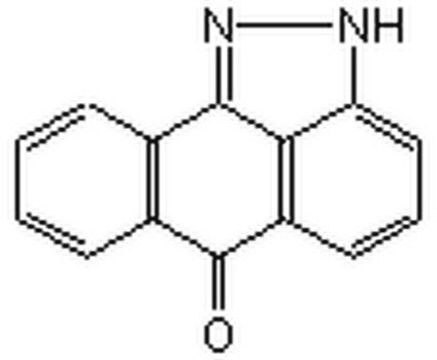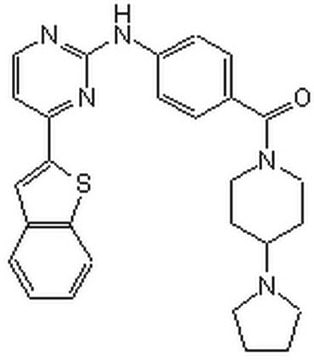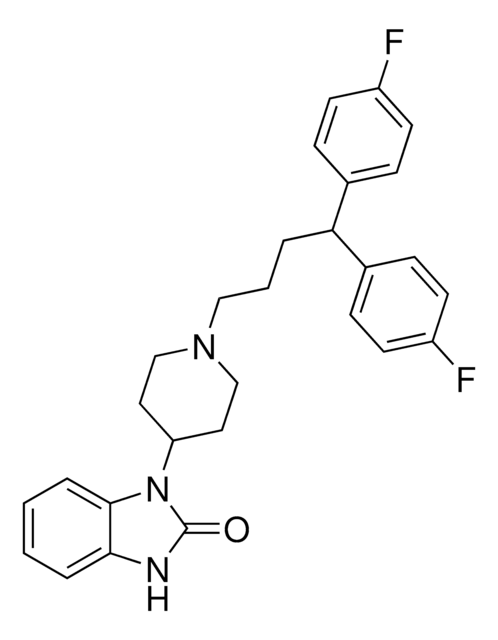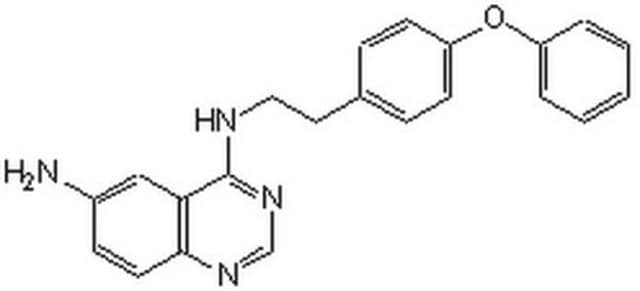401480
IKK Inhibitor III, BMS-345541
IKK Inhibitor III, BMS-345541, CAS 445430-58-0, is a cell-permeable, potent, selective, and allosteric site-binding inhibitor of IKK-2 (IC₅₀ = ~ 300 nM).
Synonim(y):
IKK Inhibitor III, BMS-345541, 4-(2ʹ-Aminoethyl)amino-1,8-dimethylimidazo[1,2-a]quinoxaline
About This Item
Polecane produkty
Poziom jakości
Próba
≥96% (HPLC)
Postać
solid
producent / nazwa handlowa
Calbiochem®
warunki przechowywania
OK to freeze
desiccated (hygroscopic)
protect from light
kolor
off-white
rozpuszczalność
DMSO: 5 mg/mL
Warunki transportu
ambient
temp. przechowywania
2-8°C
InChI
1S/C14H17N5/c1-9-3-4-11-12(7-9)19-10(2)8-17-14(19)13(18-11)16-6-5-15/h3-4,7-8H,5-6,15H2,1-2H3,(H,16,18)
Klucz InChI
PSPFQEBFYXJZEV-UHFFFAOYSA-N
Opis ogólny
Działania biochem./fizjol.
Opakowanie
Ostrzeżenie
Postać fizyczna
Inne uwagi
MacMaster, J.F., et al. 2003. Inflamm. Res.52, 508.
McIntyre, K.W., et al. 2003. Arthritis Rheum.48, 2652.
Burke, J. R., et al. 2003. J. Biol. Chem.278, 1450.
Informacje prawne
Kod klasy składowania
11 - Combustible Solids
Klasa zagrożenia wodnego (WGK)
WGK 1
Temperatura zapłonu (°F)
Not applicable
Temperatura zapłonu (°C)
Not applicable
Certyfikaty analizy (CoA)
Poszukaj Certyfikaty analizy (CoA), wpisując numer partii/serii produktów. Numery serii i partii można znaleźć na etykiecie produktu po słowach „seria” lub „partia”.
Masz już ten produkt?
Dokumenty związane z niedawno zakupionymi produktami zostały zamieszczone w Bibliotece dokumentów.
Nasz zespół naukowców ma doświadczenie we wszystkich obszarach badań, w tym w naukach przyrodniczych, materiałoznawstwie, syntezie chemicznej, chromatografii, analityce i wielu innych dziedzinach.
Skontaktuj się z zespołem ds. pomocy technicznej








